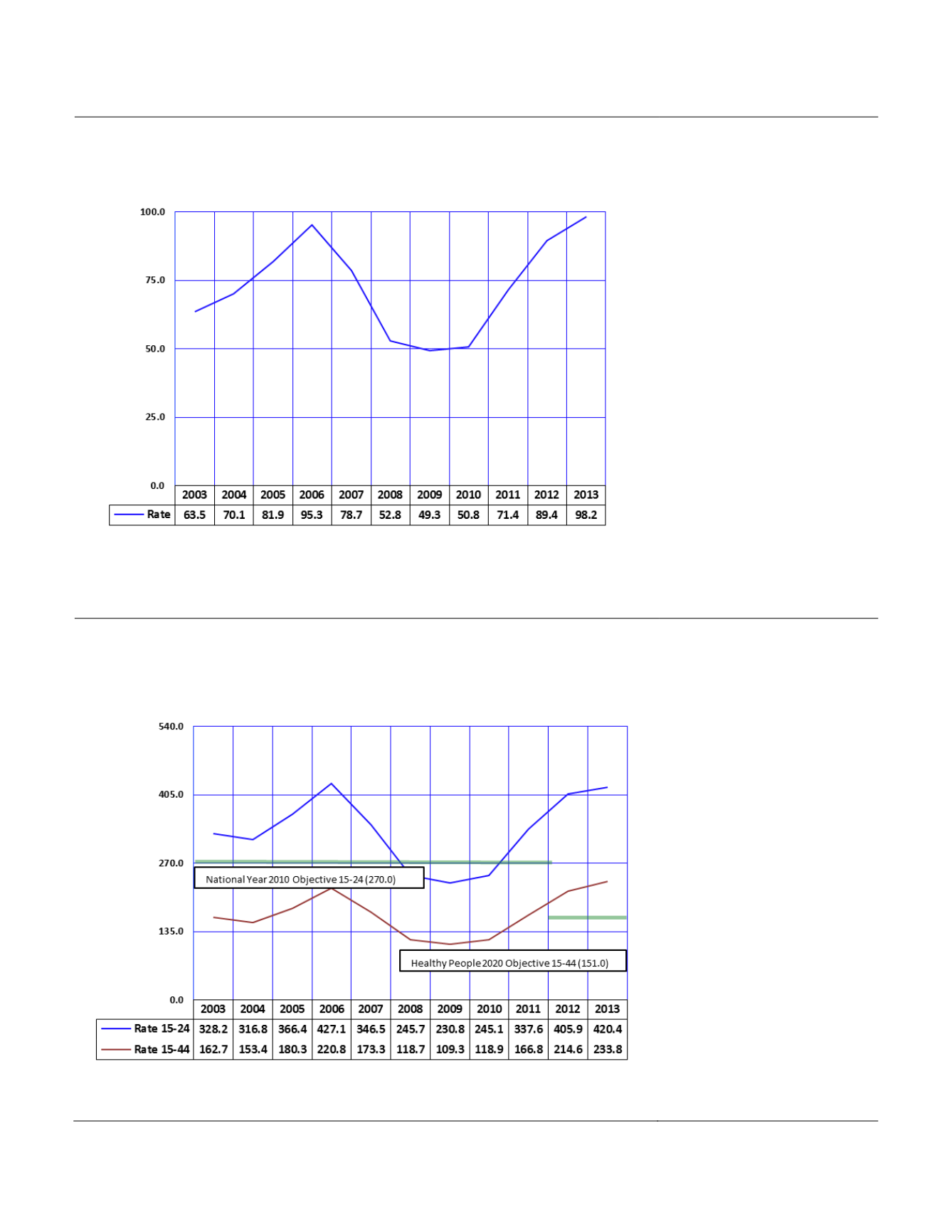
3B. SEXUALLY TRANSMITTEDDISEASES
Figure3B-1
Trends in the IncidenceRates
a
of GonorrheabyYear, Arizona, 2003-2013
Note:
a
Number of reported cases per 100,000 population.
Neisseria gonorrhoeae
infection
is the second most commonly
reported notifiable disease in
the United States. (
Figure 3B-
1
). The 99.2 percent increase in
the incidence rate of gonorrhea
from 49.3 cases per 100,000
population
in
2009
to
98.2/100,000 in 2013 likely
resulted from a combination of
factors, such as changes in
surveillance, increases in the
number of tests performed, and
actual increases in disease
occurrence (
Figure3B-1
).
The
Healthy People 2010
objective 25-2 defines the
target rate for gonorrhea as
equal to or lower than 19.1
cases per 100,000 population
and was specific to ages 15-24.
However, the
Healthy People
2020
target is for ages 15-44
and is set at 151.0/100,000.
Figure3B-2
Trends in the IncidenceRates
a
of Gonorrheaamong Females 15-24
and15-44Years, Arizona, 2003-2013
Notes:
a
Number of reported cases per 100,000 females; Therewas a change in target rate and age range For Healthy People 2020 objective.
In National Year 2010 objectivewas for females ages 15-24. In Healthy People 2020 objective is for females ages 15-44.
The 2013 incidence rate for
gonorrhea was 233.8 per
100,000 for Arizona females
age 15-44 years, meaning
Arizona?s incidence rate was
higher than the
Healthy People
2020
objective, and increased
8.4 percent from 2012.
Generally, the trend in
gonorrhea incidence rates are
similar for women age 15-24
and age 15-44, although the
overall incidence rate is
consistently higher for women
age 15-24.
216
Arizona Health Status and Vital Statistics 2013


